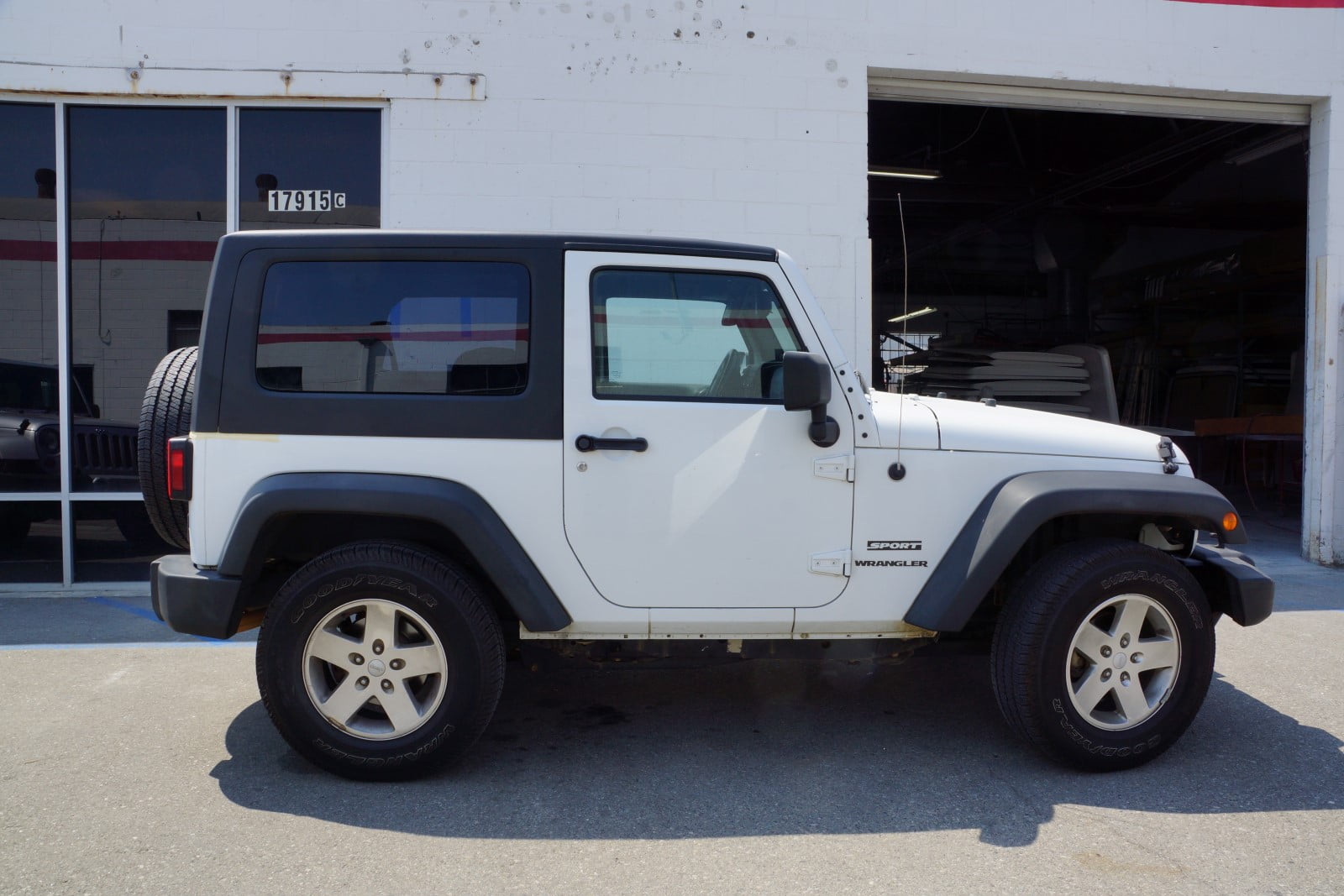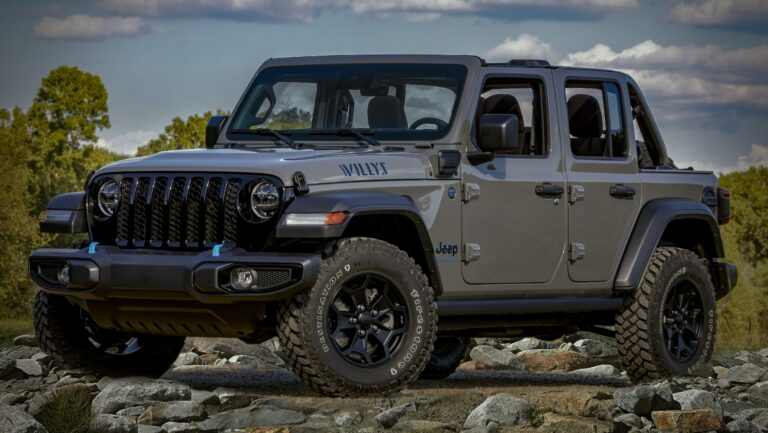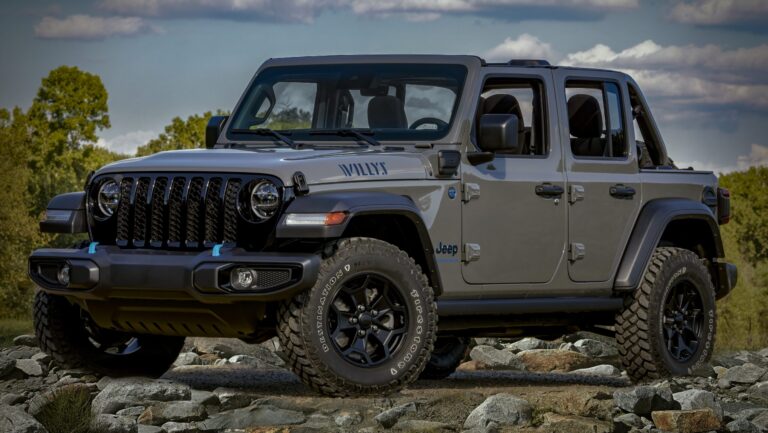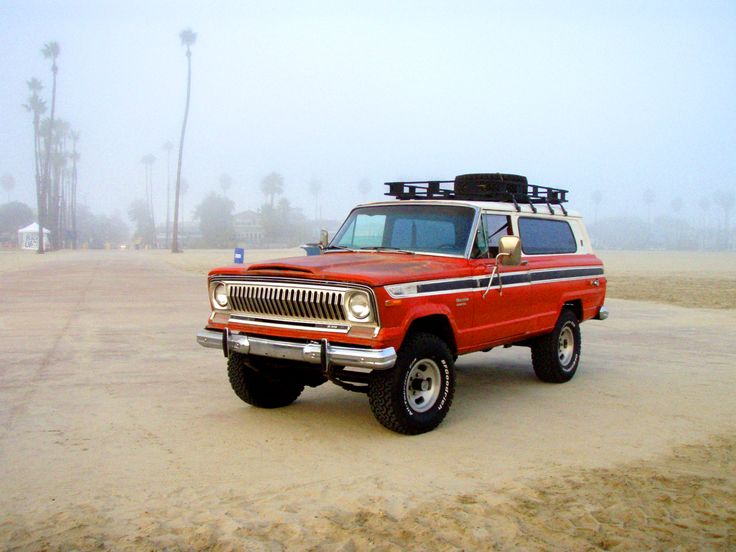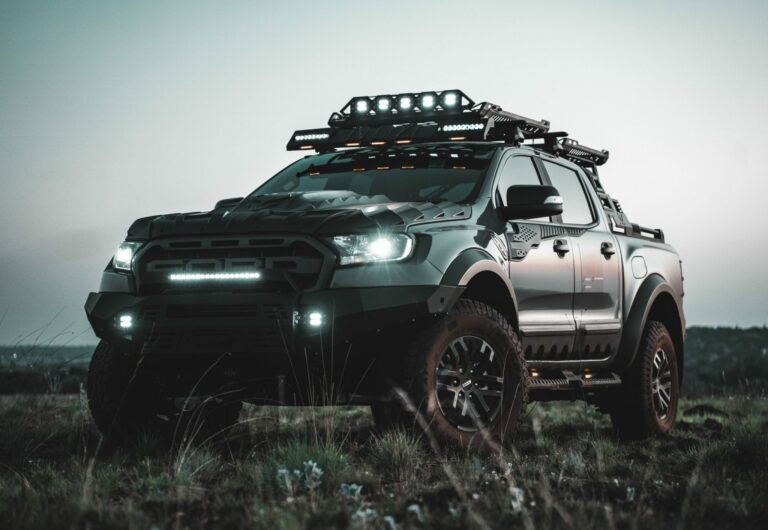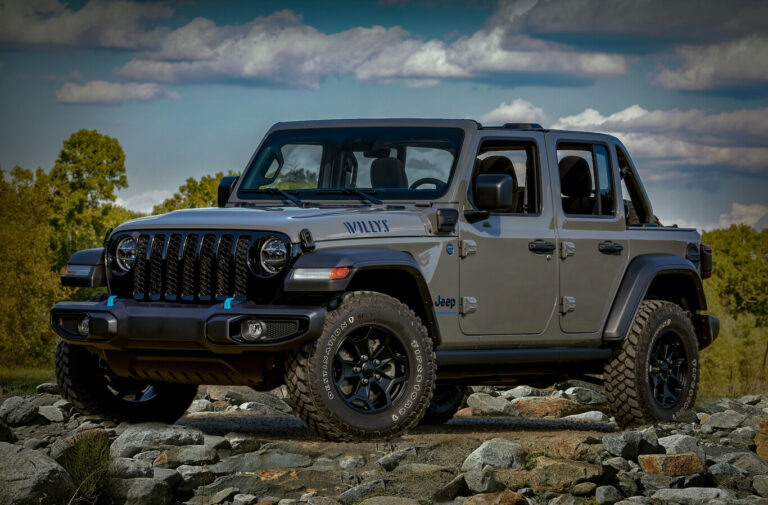The Enduring Appeal of the 1997 2-Door Jeep Wrangler: A Deep Dive into the TJ Generation
The Enduring Appeal of the 1997 2-Door Jeep Wrangler: A Deep Dive into the TJ Generation jeeps.truckstrend.com
The year 1997 marked a pivotal moment in the storied history of the Jeep Wrangler, ushering in a new era with the introduction of the TJ generation. Specifically, the 1997 2-Door Jeep Wrangler stands out as a landmark vehicle, blending the beloved classic aesthetics of its predecessors with significant engineering advancements that cemented its status as an icon. Moving away from the leaf-spring suspension of the YJ, the TJ embraced a modern coil-spring setup, offering vastly improved ride comfort and articulation without sacrificing its legendary off-road prowess. This blend of rugged capability and enhanced daily drivability made the ’97 TJ an instant classic, a vehicle that continues to be highly sought after by enthusiasts, off-roaders, and those simply looking for an authentic, open-air driving experience. It represents a sweet spot in Jeep’s lineage – a vehicle that retains mechanical simplicity while offering a more refined experience than earlier models, making it a fantastic platform for customization and adventure.
The Birth of an Icon: Understanding the 1997 TJ Wrangler
The Enduring Appeal of the 1997 2-Door Jeep Wrangler: A Deep Dive into the TJ Generation
The transition from the YJ to the TJ was a strategic move by Chrysler (then DaimlerChrysler), aiming to modernize the Wrangler while staying true to its roots. The most significant change was the adoption of a Quadra-Coil suspension system, essentially a coil-spring, multi-link setup at all four corners. This dramatically improved ride quality on pavement, making the Wrangler far more comfortable for daily driving, and enhanced off-road articulation, allowing the axles to flex more independently over uneven terrain.
Visually, the 1997 TJ brought back the iconic round headlights, a nod to the beloved CJ-series and a clear departure from the square lights of the YJ, a feature that many purists had lamented. The interior also saw a considerable upgrade, becoming more ergonomic and comfortable, though still maintaining the utilitarian feel expected of a Jeep.
Under the hood, two robust engine options were available: the standard 2.5-liter AMC 4-cylinder engine, offering 120 horsepower, and the highly acclaimed 4.0-liter AMC straight-six, delivering a more potent 181 horsepower and impressive torque. The 4.0L engine quickly became the preferred choice for its legendary durability and ample power for both highway driving and challenging trails. Transmission options included a 5-speed manual (AX-5 for the 2.5L, AX-15 for the 4.0L) and a 3-speed automatic (32RH for both), with a 4-speed automatic (42RLE) introduced later in the TJ’s production run. The standard Command-Trac part-time four-wheel-drive system ensured that the TJ lived up to its off-road heritage.
Why the 1997 TJ Remains a Favorite
Despite being over two decades old, the 1997 TJ 2-Door Jeep Wrangler continues to be a highly desirable vehicle for several compelling reasons:
- Unrivaled Off-Road Prowess: The short wheelbase, live axles, excellent approach and departure angles, and robust 4×4 system make the TJ incredibly capable off-road. Its coil-spring suspension, a significant upgrade from the YJ, provides superior articulation, allowing the wheels to stay in contact with the ground over extreme obstacles.
- Modifiability & Aftermarket Support: The TJ is arguably one of the most customizable vehicles ever made. A vast aftermarket industry provides an endless array of parts, from suspension lifts and larger tires to heavy-duty bumpers, winches, and axle upgrades. Its relatively simple mechanical design makes it easy for enthusiasts to work on and modify, catering to any level of off-road ambition.
- Simplicity & Durability: Compared to modern vehicles burdened with complex electronics, the 1997 TJ is refreshingly simple. This translates to easier diagnosis and repair, making it a favorite for DIY mechanics. The 4.0L inline-six engine is particularly renowned for its bulletproof reliability, often reaching well over 200,000 miles with proper maintenance.
- The Authentic Jeep Experience: With removable doors, a fold-down windshield, and soft-top or hard-top options, the TJ delivers the quintessential open-air Jeep experience. This connection to the environment and the feeling of freedom is unmatched by most other vehicles.
- Classic Aesthetics: The return of the round headlights combined with the Wrangler’s timeless boxy silhouette gives the ’97 TJ a classic, rugged appeal that never goes out of style.
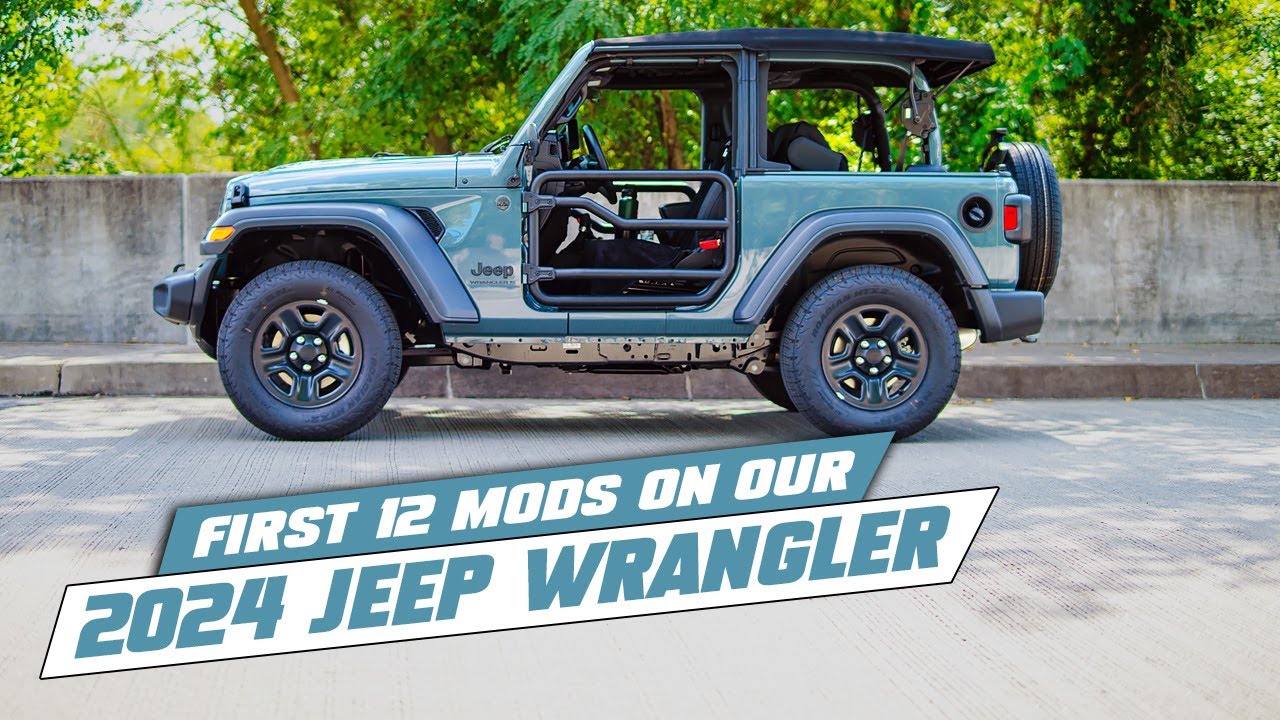
Key Considerations Before Buying a 1997 TJ

Purchasing a vintage vehicle like a 1997 TJ requires careful consideration. While they are robust, age and previous ownership can take their toll.
- Rust Inspection: This is paramount. TJs are notorious for rust, especially in the frame (particularly near the control arm mounts and skid plate), body mounts, floor pans, and rocker panels. A thorough inspection, ideally on a lift, is crucial. Surface rust is manageable, but extensive frame rust can be a deal-breaker.
- Mileage & Maintenance History: Look for well-maintained examples with documented service records. While the 4.0L engine is durable, consistent oil changes, cooling system maintenance, and preventative repairs are key to its longevity. High mileage isn’t necessarily a red flag if maintenance has been diligent.
- Engine Health: Check for common 4.0L issues like oil leaks (especially from the rear main seal or oil filter adapter), cooling system issues (cracked cylinder heads in early TJs, though less common in ’97, and cooling system component wear), and rough idling.
- Transmission & Drivetrain: Test both 2WD and 4WD modes. Ensure smooth shifting for manual transmissions (check for clutch slip) and proper engagement for automatics. Listen for unusual noises from the transfer case or differentials.
- Previous Modifications: Be wary of poorly executed modifications. While many TJs are modified, quality work by reputable shops or experienced owners is essential. Incorrectly installed lift kits, steering components, or electrical modifications can lead to safety issues and costly repairs.
- Interior Wear: Check for torn seats, worn carpets, and functioning gauges and HVAC controls. While not deal-breakers, they add to restoration costs.

Maintenance and Upgrades for Your 1997 TJ
Owning a 1997 TJ means embracing a proactive approach to maintenance and having a world of upgrade possibilities at your fingertips.
Essential Maintenance:
- Fluids: Regular changes of engine oil, transmission fluid, transfer case fluid, and differential fluids are critical.
- Cooling System: Inspect hoses, radiator, water pump, and thermostat regularly. The 4.0L runs hot, and a healthy cooling system is vital.
- Brakes: Check pads, rotors, calipers, and brake lines for wear and rust.
- Suspension Components: Inspect bushings, ball joints, tie rod ends, and shocks for wear. Replacing these can dramatically improve ride quality and handling.
- Rust Prevention: Even if you buy a rust-free TJ, apply rust inhibitors (like fluid film) annually, especially if you live in a region with road salt.
Common Upgrades:
- Suspension Lifts: The most common upgrade, ranging from mild 2-inch lifts for tire clearance to extreme 6-inch+ lifts for serious rock crawling. Choose a lift based on your intended use and budget, ensuring it includes control arms, track bars, and new shocks for proper geometry.
- Tires & Wheels: Larger, more aggressive tires (all-terrain or mud-terrain) are essential for off-road performance. Appropriate wheel backspacing is crucial to prevent rubbing with larger tires.
- Armor: Skid plates (engine, transmission, transfer case, fuel tank), rock sliders, and heavy-duty bumpers protect vital components from trail damage.
- Lighting: Upgrading headlights to LED or HID can significantly improve nighttime visibility. Auxiliary lights (fog, spot, flood) are popular for off-road use.
- Recovery Gear: A winch, recovery straps, and a hi-lift jack are invaluable for self-recovery or assisting others on the trail.
- Interior Comfort/Utility: Aftermarket seats, sound systems, and storage solutions can enhance the daily driving experience.
The Driving Experience: On-Road vs. Off-Road
Driving a 1997 TJ is a unique experience, starkly different from modern SUVs.
- On-Road: Expect a somewhat bouncy and less refined ride compared to contemporary vehicles. The steering can be a bit loose, and road noise, especially with a soft top or aggressive tires, is noticeable. It’s not a highway cruiser, but it’s perfectly capable as a daily driver, particularly if you appreciate its raw, connected feel. Fuel economy is not its strong suit.
- Off-Road: This is where the TJ truly shines. Its compact size, excellent maneuverability, and robust 4×4 system make it a joy to pilot over challenging terrain. The coil-spring suspension allows for impressive articulation, keeping the wheels grounded and providing traction. Whether it’s rock crawling, mud bogging, or trail riding, the ’97 TJ feels completely at home.
Challenges and Solutions
- Rust: The biggest challenge. Solution: Thorough pre-purchase inspection, immediate rust treatment/repair, and ongoing rust prevention (e.g., Fluid Film, undercoating). Frame repair kits are available for common weak points.
- Aging Components: As an older vehicle, parts wear out. Solution: Proactive replacement of wear items (bushings, hoses, belts), using quality aftermarket parts, and having a budget for unexpected repairs.
- Fuel Economy: It’s poor (typically 15-18 MPG for the 4.0L). Solution: Accept it. There are no practical, cost-effective upgrades to significantly improve it.
- Road Noise & Leaks: Soft tops are noisy and can leak. Solution: Invest in a quality aftermarket soft top, or consider a hard top for better insulation and security. Ensure door seals are in good condition.
- Security: Removable doors and soft tops make TJs easy targets for theft or break-ins. Solution: Aftermarket alarms, locking center consoles, and simply not leaving valuables inside.
1997 2-Door Jeep Wrangler Estimated Price Table
Please note: Prices for used vehicles, especially classic and enthusiast models like the 1997 TJ, vary significantly based on geographic location, overall condition, mileage, maintenance history, and the quality/extent of modifications. This table provides a general estimate.
| Condition Category | Estimated Price Range (USD) | Key Factors Affecting Price |
|---|---|---|
| Poor | $3,000 – $6,000 | Significant rust (frame/body), major mechanical issues (engine/transmission), extensive body damage, non-running or barely running. Requires substantial investment. |
| Fair | $6,000 – $10,000 | Moderate rust (manageable), minor mechanical issues, high mileage, worn interior/exterior, some deferred maintenance. Drivable but needs work. |
| Good | $10,000 – $15,000 | Minimal to no significant rust, solid running gear (4.0L preferred), average mileage (100k-180k), decent interior/exterior, well-maintained. May have tasteful modifications. |
| Excellent | $15,000 – $25,000+ | Rust-free frame, low mileage (under 100k-120k), pristine mechanical condition, well-preserved original or professionally restored interior/exterior, high-quality, desirable modifications. Collector potential. |
- Note: Heavily modified TJs with high-end components (e.g., V8 swaps, custom axles, long-arm lifts) can command even higher prices, depending on the quality of work and components. Conversely, a bone-stock, well-preserved example can also fetch a premium from collectors.
Frequently Asked Questions (FAQ) about the 1997 2-Door Jeep Wrangler
Q1: Is the 1997 TJ a good first Jeep?
A1: Absolutely! It’s an excellent first Jeep. It offers a classic Jeep experience with the benefits of coil-spring suspension, a reliable engine, and a massive aftermarket, making it a great platform to learn about off-roading and vehicle maintenance.
Q2: What are the common rust spots on a 1997 TJ?
A2: The most critical areas are the frame, especially near the control arm mounts (upper and lower) and the skid plate bolts. Also check floor pans, rocker panels, and body mounts.
Q3: Which engine is better, the 2.5L or the 4.0L?
A3: For most users, the 4.0L inline-six is vastly superior. It offers significantly more power and torque, making highway driving and off-road obstacles much easier. It’s also renowned for its incredible durability. The 2.5L is adequate for light trail use or if you plan an engine swap.
Q4: Can I daily drive a 1997 TJ?
A4: Yes, many people daily drive TJs. However, be prepared for a less refined ride, higher road noise, and lower fuel economy compared to modern vehicles. It’s a rugged vehicle, not a luxury cruiser.
Q5: How much does it cost to lift a TJ?
A5: Lift kit prices vary widely. A basic 2-inch budget boost can be a few hundred dollars. A comprehensive 3-4 inch suspension lift with new shocks, springs, and control arms can range from $1,000 to $3,000+. Professional installation adds significantly to the cost.
Q6: Are parts readily available for the 1997 TJ?
A6: Yes, parts availability is excellent. Given the TJ’s popularity and long production run (1997-2006), OEM, aftermarket, and used parts are widely available through various retailers and salvage yards.
Q7: What’s the fuel economy like for a 1997 TJ?
A7: Expect around 15-18 miles per gallon (MPG) for a 4.0L TJ, depending on tire size, gearing, and driving habits. The 2.5L might get slightly better, but neither is economical.
Conclusion
The 1997 2-Door Jeep Wrangler stands as a testament to thoughtful evolution without sacrificing core identity. It successfully bridged the gap between the utilitarian simplicity of early Jeeps and the more refined demands of modern drivers, all while retaining its legendary off-road capability. For enthusiasts, it represents a sweet spot in the Wrangler lineage – a highly customizable, mechanically robust, and endlessly enjoyable vehicle that offers an authentic, open-air driving experience. Owning a ’97 TJ is more than just owning a vehicle; it’s an invitation to adventure, a canvas for personalization, and a connection to a passionate community. Its enduring appeal ensures that the spirit of the TJ will continue to conquer trails and turn heads for decades to come.

